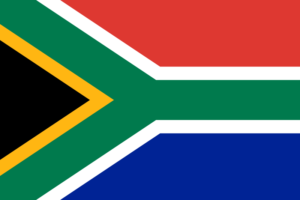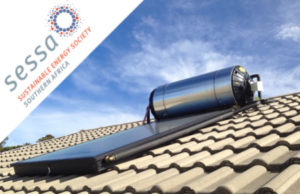South Africa: SAIA Examines Green Geyser Replacement Project
April 11, 2012
 The South African Insurance Association (SAIA), a body representing the short-term insurance industry, has completed phase One of an assessment related to the Green Geyser Replacement Project. In a press release from 3 April, the association said that four working groups have taken a look at the implications to the participating short-term insurers if they were to offer their clients a solar water heater or a heat pump in case of a valid insurance claim for a damaged electric boiler.
The South African Insurance Association (SAIA), a body representing the short-term insurance industry, has completed phase One of an assessment related to the Green Geyser Replacement Project. In a press release from 3 April, the association said that four working groups have taken a look at the implications to the participating short-term insurers if they were to offer their clients a solar water heater or a heat pump in case of a valid insurance claim for a damaged electric boiler.
The association´s engagement in the solar water heater market is possible, because the hot water boiler is part of home insurance in South Africa. Whenever there is a fire, flood damage or a burst boiler, the insurance has to cover the costs for the new electric water heater. “We are responsible for the replacement of around 200,000 electric boilers per year,” Debbie Donaldson, General Manager Strategy and Planning at the SAIA, says. The SAIA represents 59 members in the short-term insurance sector, although not all of its members are involved this line of business.
SAIA members have recognised that although electricity-saving measures have been discussed a lot over the last five years, the available offers on the South African market have not sparked green alternatives. “We have treated this issue extremely seriously. The objective of the assessment was to be able to offer a green alternative as a standard option,” explains Donaldson. The General Manager Strategy and Planning adds that phase One saw the identification of three critical issues that needed to be addressed within the framework created by the government, in order to encourage the shift to energy-efficient alternatives.
First, there is an absence of a regulatory framework that leads the end consumer to energy-efficient alternatives. Second, the financial gap between the investment costs of an electric geyser on one side, and a solar water heater or heat pump on the other, needs to be closed more effectively.
“We are talking to the government about the need to support the retrofit market. Also, we have done an analysis on the existing financial mechanism by Eskom. We have noticed that the mechanism is too complicated and too slow because clients have to wait for several weeks and months to receive the subsidy,” explains Donaldson. The SAIA claims that an instant refunding mechanism is needed that works smoothly for the benefit of clients.
According to the SAIA, the third critical issue that needs to be addressed is that homeowners, in many cases, seem to be confused by the need for a different replacement, and which options to choose from, should they have a damaged hot water system. Consequently, clear and knowledgeable messages are needed to promote energy-efficient solutions and their advantages for the homeowner.
“Our aim is to develop a generic industry offer of a green alternative that promotes the image and the reputation of the insurance industry and is an affordable solution for both our members and consumers,” summarises Donaldson.
Currently, the Green Geyser Replacement Project is undergoing phase Two. Each participating SAIA member is conducting a company-specific analysis, in order to make an informed decision as to whether or not it can commit to preparing a pilot and ultimately the implementation of the Green Geyser Replacement Project.
This phase is expected to be completed at the end of June 2012. If the results demonstrate an achievable outcome by participating members and if the SAIA is able to demonstrate formal commitment by stakeholders to the 3 critical issues indicated above, then stage 3 will enable members to sign up to a Voluntary Green Code for Green Geyser Replacements and for the SAIA and participating members to start preparing for an implementation of a full pilot in the second half of 2013. The SAIA has put in long hours in the Green Geyser Replacement Project. However, Donaldson concedes: “We still have a long way to go and much work to do.”


